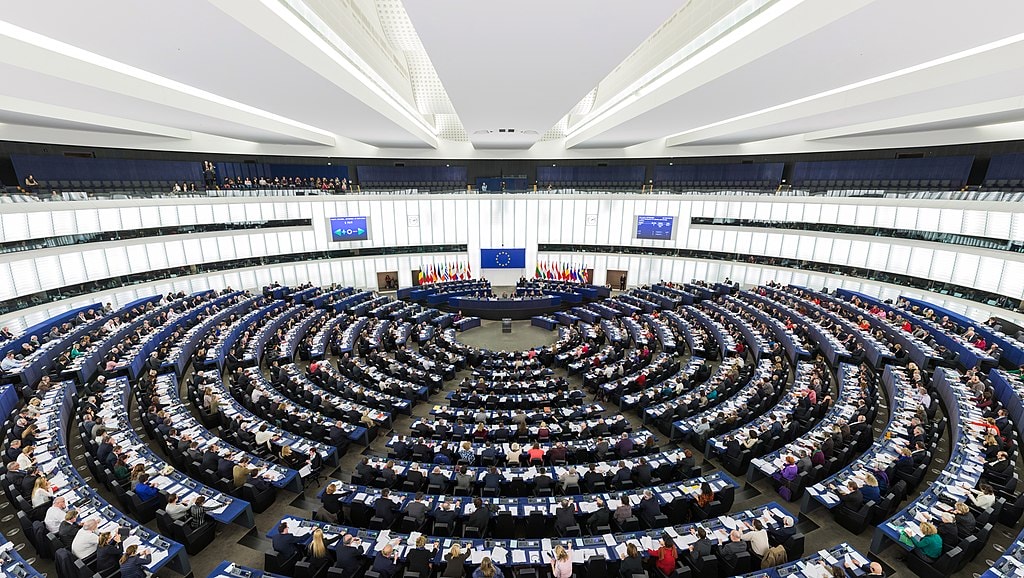Last week I got up on Monday morning and sat down to write my usual kind of column about what was going on in DC: the horrors and the remedies accompanied by my clever little riffs about nihilism and anarchism. I came down on Tuesday morning, looked at what I had written, felt a visceral spasm of disgust, and threw it into the wastepaper basket.
Enough about execrable politicians living socially destructive lives! Whom do I really admire? Is there someone out there who engages in life with a great big dollop of integrity?
Parker Palmer, a Quaker community organizer, life-long practitioner of the nonviolent method, teacher, author and a profound spiritual thinker came immediately to mind. In his preface to “A Hidden Wholeness” he lists the guiding themes of his life: Integral Life (Integrity), Community, Teaching and Learning for Transformation, and Nonviolent Social Change.
Integral Life
This means a wholeness within one’s self, all parts working as one, no part alienated from the other, which he characterizes in “Let your Life Speak” as “Living by your own best lights.” To achieve personal integrity, people should “decide no longer to act on the outside in a way that contradicts some truth about themselves that they hold deeply on the inside.”
Some years ago I offered a course on “Do Unitarians Have Souls?” to a class of (very skeptical) secular humanists. We were reading “A Hidden Wholeness” and, one Saturday morning over coffee and donuts, we got out construction paper and scissors to create the Möbius strip Parker Palmer uses to illustrate the concept of Integrity.
On one side of the of the 1” x 8” length we wrote “Self,” on the other, “Soul.” Scotch taped together in an ordinary circle these would have yourself on the outside (onstage) and your soul on the inside (backstage), but formed in a Möbious fashion there is no inside and outside, just a cheerful little loop.
Parker Palmer had a painful struggle with a disruption between inside and outside as a child, when he was extroverted in school, making himself well-liked and popular, but rushed home every day needing hours alone in his room to recover. When describing the roots of depression that assaulted him twice in his forties, he talks about how letting your external busyness outrun your internal resources can stop you in your tracks. In his case, the burnout led to terrifyingly long periods in “the snake pit of the soul,” unable to do anything at all. He emerged to reconsider how to live within a complexity of imperfection and integrity, in a state of “broken wholeness.”
Community
Parker Palmer graduated Carleton College1961, and spent much of the 1960s in Berkeley, where he earned a Ph.D. in the Sociology of Religion from the University of California in 1970. He then moved to Washington DC to teach at Georgetown University and take his first steps as a community organizer for racial justice. After a sabbatical at the Quaker “Living and Learning” Community, Pendle Hill, he joined the American Society of Friends and stayed on there for 11 years, becoming the Dean of Studies and Writer in Residence.
Quakerism’s unique take on the way the inner life and community interact shaped him profoundly. We tend to think of a Quaker meeting as a whole congregation silently listening to their “inner voices,” and might conclude that it is a solitary kind of faith. “Solitude,” however, “does not necessarily mean living apart from others” to Parker Palmer. “Rather, it means never living apart from one’s self. It is about being fully present to ourselves, whether or not we are with others. Community does not necessarily mean living face-to-face with others; rather, it means never losing the awareness that we are connected to each other.”
Quakerism in America has always been associated with strenuous civic engagement, from the key role Quakers played in the Abolition Movement to their resistance to the Vietnam war. They have always been recognized by the other volunteer political associations and political groups with which they are allied for their organizational skills: it is no surprise that Quaker Bayard Rustin was the chief architect of the March on Washington crucial to the successes of the Civil Rights Movement.
Nonviolence
In an interesting meeting of minds, when Theologian and Teacher Howard Thurman and his wife, Sue Bailey Thurman, brought the teachings of Gandhi back from India, where they met with him in 1935, Quaker Byard Rustin and Baptist Martin Luther King grasped the implications of Gandi’s methods for developing effective nonviolent resistance.
In the last decade of the twentieth century, I became fascinated by theories of a paradigm change from win/lose to win/win, from power/over to power/with, an idea introduced by Stephen R. Covey in his book “The 7 Habits of Highly Effective People“ and by Riane Eisler in “The Chalice and the Blade.”
In Covey’s win/win paradigm only those who are the best in competition win the rewards, even where there is ample “abundance” for everyone. Eisler describes two historical models: the chalice, symbolizing cooperative partnership, plenty for all, and equality, while the blade characterizes domination in societies that promote aggressively climbing over other people to get ahead.
Parker Palmer, like Covey and Eisler, stresses our need to get beyond the “fight or flight” responses normalized by a win/lose world by adopting a “third way” to resolve issues: “To fight is to meet violence with violence, generating more of the same; to flee is to yield to violence, putting the private sanctuary ahead of the common good. The third way is the way of nonviolence, by which I mean commitment to act in every situation in ways that honor the soul.” Nonviolence is a hard discipline to undertake: “It’s not easy to subdue the overweening Ego in order to free the adventuresome soul.”
In Quaker practice, violence is not limited to physical assault but includes interpersonal harm like in a conversation where people interrupt and judge each other. Friends are trained in “speaking our truth in a circle of trust (which) always takes the same form: we speak from our own center to the center of the circle — to the receptive heart of the communal space — where what we say will be held attentively and respectfully.”
Nonviolence in conversational practice also applies to the classroom, where the “Socratic method” is misapplied as verbal aggression and a hierarchical academic structure dictates that what is going on inside the teacher’s head is more important than what is going on in the students’. In “The Courage to Teach: Teaching and Learning for Transformation,” Parker Palmer urges instructors to “teach authentically” by cultivating their inner life and fostering similar awareness in their students. He understands Education as a similar spiritual journey to the Quaker one, a quest for integrity undertaken by both student and teacher.
Related Articles: On Freedom: How to Protect Democratic Values in a Second Trump Regime | The Fox in the Henhouse: On Steven Brill’s ‘The Death of Truth’ | Monism and Pluralism in American Political Thinking | Voluntary Associations: America’s Secret Weapon to Get Things Done
For my last ten years as a college professor at the University of Wisconsin-Madison, I renounced what Virginia Woolf once described as the “vain and vicious” practice of lecturing. My students met in groups of eight for initial review of questions about the assignment, with the rest of the class time given over to facilitated discussion in which I forbade students to interrupt each other or converse aggressively because I was convinced that such behavior promoted “flight or fight” emotions that would abort their neo-cortexes. I encouraged them to develop integrity in critical thinking by bringing their personally lived experience to every assignment, and I required an essay on what values they intended to live by on the final exam.
Violence occurs in community action when you impose plans you have cooked up on the people you are trying to help. When Parker Palmer was getting started as a community organizer in DC, “learning a bit how to organize for racial justice in a rapidly changing neighborhood,” he began to understand that his job was “not to try to force people into things they did not want to do, such as protesting against unscrupulous real estate practices like blockbusting and redlining,” but to instead “give them excuses and permissions to do things they really wanted to do — things related to the justice agenda — but were too shy or fearful to do under their own steam.”
This follows the Circle of Trust model of honoring where participants are coming from so that they can present their problem in their own terms, not yours. A community meeting can be conducted in such a way to be neither invasive, as in telling someone what to do, or evasive, as in not paying enough attention to what the community itself needs and wants to do about it.
In 1997, Parker Palmer established the Center for Courage and Renewal, with a hub based in Seattle, Washington. It provides retreats, workshops, and online courses to help people find their inner teacher so as to be more effective in their community commitments. The mission to “foster the relational trust and stamina we all need to transform institutions from the inside out” derives from his lifelong adherence to his nonviolent practice.
Democracy
Violence in conversation applies to the divisive and disagreeable civil discourse which has become so degraded in today’s American Society. In 2011, Parker Palmer published “Healing the Heart of Democracy: The Courage to Create a Politics Worthy of the Human Spirit,” and in a 2024 edition has brought it up to date with an analysis of our present day atmosphere of divisiveness and revenge.
We are living our civic life in a “tragic gap” between reality and possibility, a rift which the Quaker Practice of attentive listening and community consensus addresses. We need to hold the reality of our (horrific) present circumstances and our awareness of possibly returning to some modicum of civic virtue in our minds at the same time, and act from the tension between them. In the political realm this requires acceptance of, and more open discourse with, our opponents to maintain the checks and balances required for a democratic polity in face of the bad choices we human beings have shown ourselves all too capable of making.
Conclusion
In his social thinking and activism, Parker Palmer draws personal strength from a divine power that Quakers find inside of themselves and that they manifest in community action. This individual and collective wisdom derives neither from the individual nor from the collective: it springs from a divinity existing within, between, and beyond human beings. America’s founders understood the universe as similarly preordained and coherent, though, in their case, based on reason. Not only scientific truths but also moral ones were built into this rational organization, which is why they derived their democratic ethics from truths that they believed reasonable people could discern as “self-evident.”
Do you need to take the universe as divinely created along rational and moral lines to live a good life and practice civic virtue? There are plenty of people like my secular humanist friends who derive their lived values from the moral consensus of human beings over the ages. Ethical Culture, similarly, was founded in 1976 by Felix Adler to help Jews and others to develop their reasoning capacities, which will inevitably lead them to the moral principles that undergird both peoples and nations.
As for me, I persist as a blazing mystic to whom the universe is alive with enormous life, some of it mysterious, some of it comprehensible, the whole thing humming along with justice, mercy, compassion, and an enormous tenderness. I guess this aligns me pretty closely to Parker Palmer who, in a graduation speech at Naropa University in 2015, leaves us with this advice:
“What I really mean. . .is be passionate, fall madly in love with life. Be passionate about some part of the natural and/or human worlds and take risks on its behalf, no matter how vulnerable they make you. No one ever died saying, I’m sure glad for the self-centered, self-serving and self-protective life I lived.”
Editor’s Note: The opinions expressed here by the authors are their own, not those of Impakter.com — Cover Photo Credit: Freepik.






